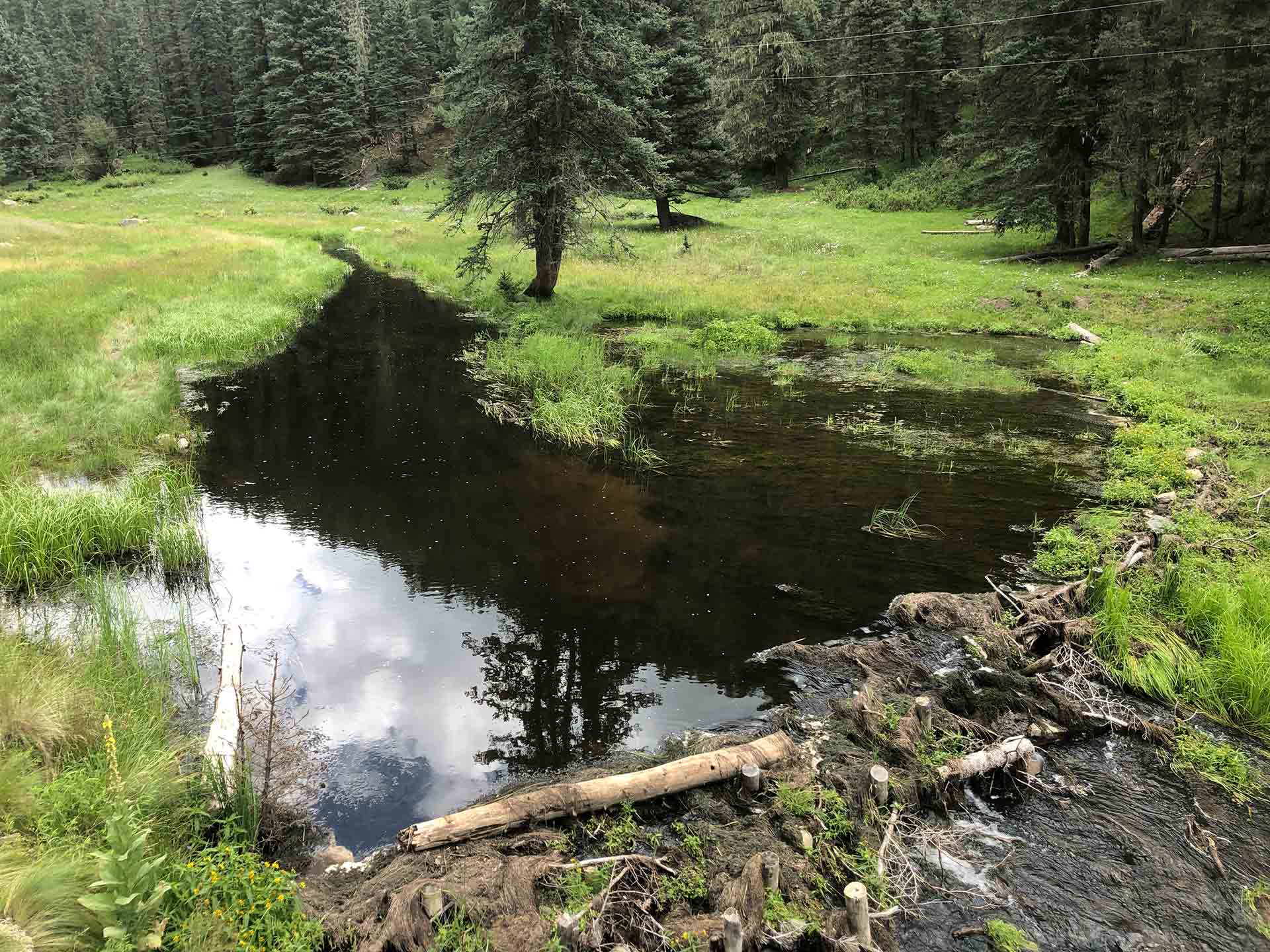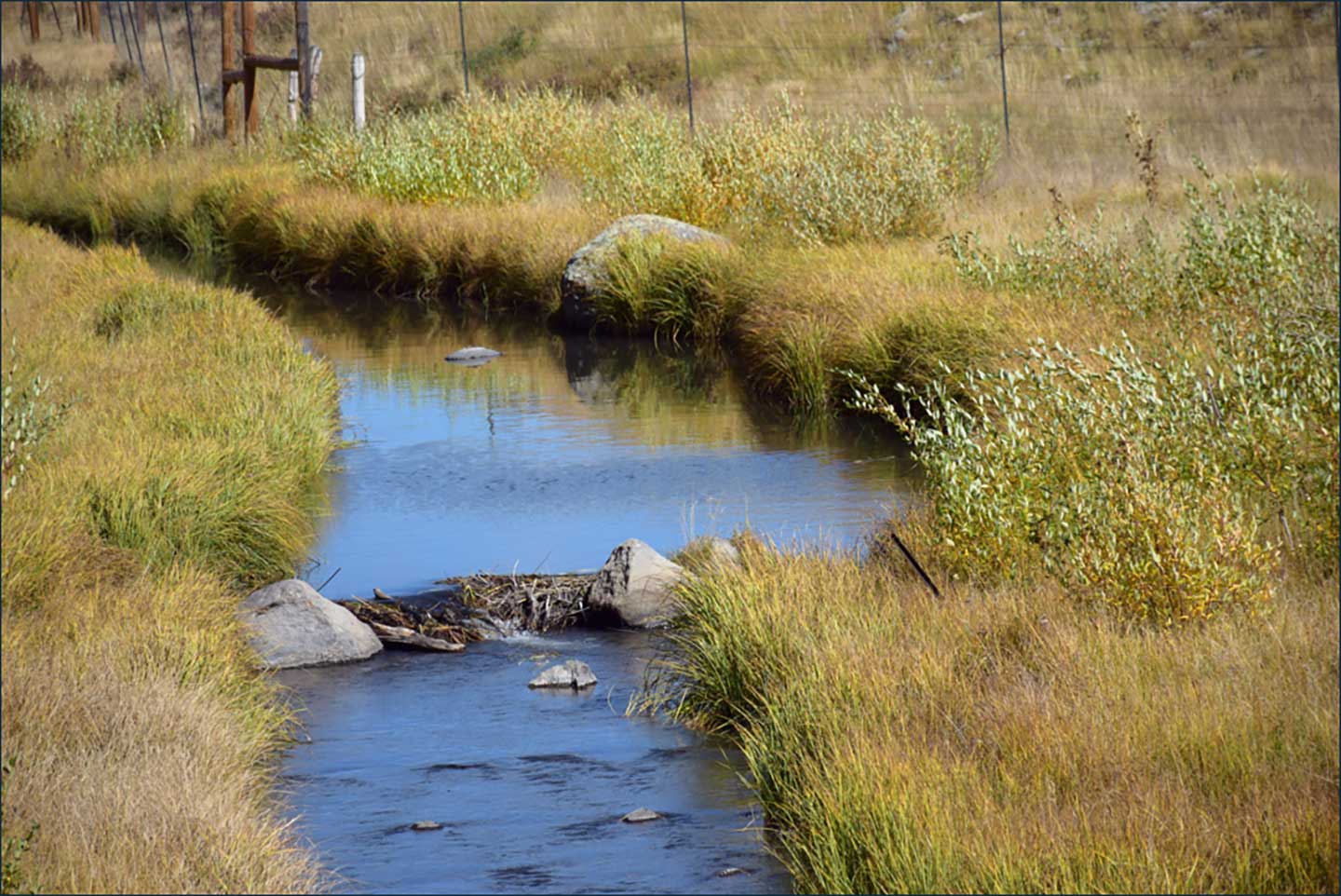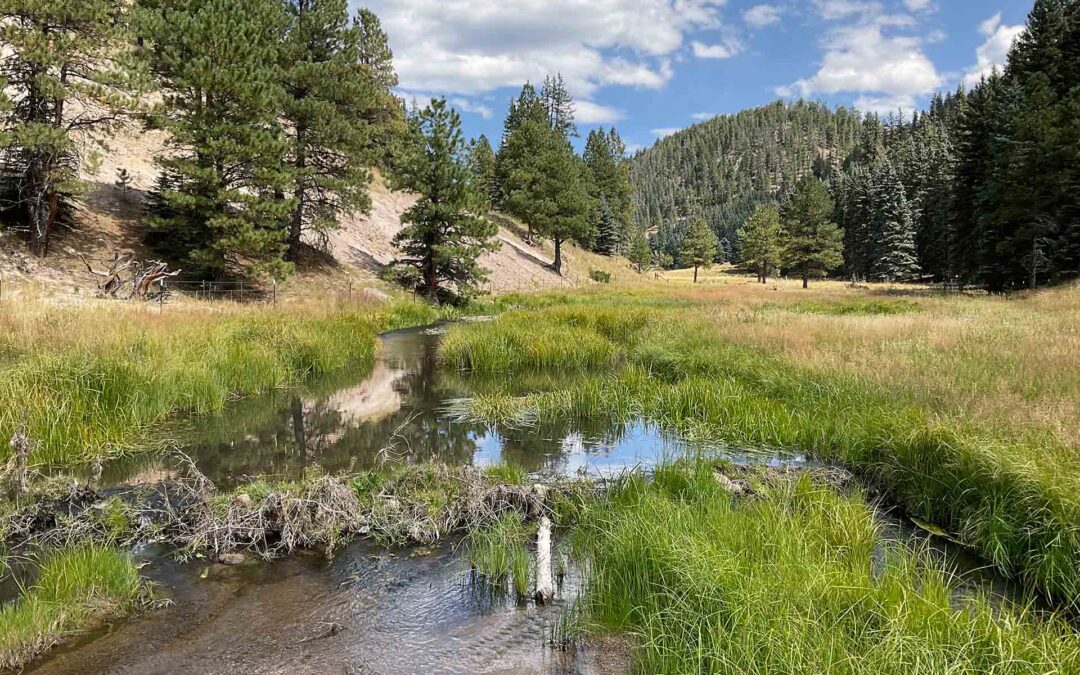Wetlands are expanding year by year along San Antonio Creek after installation of beaver dam analogues.
Welcoming Beavers Back to the Caldera
A decade ago, San Antonio Creek resembled little more than a straightened irrigation ditch – narrow, incised, disconnected from its floodplain, and nearly entirely barren of willows and woody riparian vegetation. Since 2020, Rio Grande Return has installed approximately 200 Beaver Dam Analogues (BDA)s, Post-Assisted Log Structures (PALS), and Large Woody Debris Structures (LWDS); planted thousands of willows; and erected and maintained protective fencing along 3.5 creek-miles in the Santa Fe National Forest – restoring over 50 acres of vibrant wetland.
Today, San Antonio Creek is a living demonstration of low-tech, process-based restoration (LTPBR), and was one of the first examples of this restoration approach on public lands in New Mexico. The project has weathered multiple high-flow events, with BDAs and PALS capturing sediment and rebuilding natural and dynamic stream structure. Small, localized changes have occurred, converting previously dry, isolated historic terraces into thriving riparian zones. Natural willow and cottonwood generation processes have been restored. Wetland vegetation is now more abundant, taller, denser, and spreading across the valley. Fish dart beneath PALS and LWDS, floodplain health is on the rise, and the entire ecosystem is gaining complexity and resilience – tracked through ongoing geomorphic, vegetation, and groundwater monitoring. For example, monitoring results show that, from 2020 to 2024: the water table rose up to three feet locally, wetland obligate vegetation species increased from 5% to 32% as measured along transects perpendicular to the stream, and non-native vegetation decreased from 53% to 12%. All of these data point to a more resilient riverscape.
Best of all, beavers have moved back in – building new dams, maintaining BDAs, and even raising a small lodge upstream. That’s the ultimate goal: a self-sustaining stream managed by nature’s own engineers.
This work reflects a long-term partnership between Rio Grande Return and the Santa Fe National Forest. In 2024, we extended our work 1.35 miles upstream into the Valles Caldera National Preserve, reviving 47 additional wetland acres. Historic records confirm that beavers were trapped out of the area in the 1950s Now, the Preserve’s management plan welcomes them back – by creating the habitat they need to return.

San Antonio Creek before (2008) and after (2024) restoration.

Beaver dam analogues slow and spread water onto the creek’s floodplain.

Drone imagery shows that the creek has started to develop side channels. It doesn’t look like an irrigation ditch anymore.

Beavers have adopted the project – they have built several dams inside our elk exclosures and they are maintaining our beaver dam analogues.

Large woody debris, a pile of sediment accumulated after a storm, and tall wetland plants makes great fish habitat!
